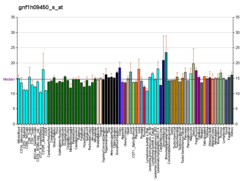| VN1R3 |
|---|
|
| Identifiers |
|---|
| Aliases | VN1R3, V1RL3, V1RL3p, FKSG46, vomeronasal 1 receptor 3 (gene/pseudogene), vomeronasal 1 receptor 3 |
|---|
| External IDs | GeneCards: VN1R3; OMA:VN1R3 - orthologs |
|---|
| RNA expression pattern |
|---|
| Bgee | | Human | Mouse (ortholog) |
|---|
| Top expressed in | - testicle
- myometrium
- pancreas
- uterus
- female reproductive system
- organ system
- material anatomical entity
- vagina
|
| | | More reference expression data |
|
|---|
| BioGPS |  | | More reference expression data |
|
|---|
|
| Gene ontology |
|---|
| Molecular function | - G protein-coupled receptor activity
- pheromone receptor activity
- signal transducer activity
- pheromone binding
| | Cellular component | - integral component of membrane
- plasma membrane
- membrane
| | Biological process | - G protein-coupled receptor signaling pathway
- response to pheromone
- signal transduction
- sensory perception of chemical stimulus
| | Sources:Amigo / QuickGO |
|
| Orthologs |
|---|
| Species | Human | Mouse |
|---|
| Entrez | | |
|---|
| Ensembl | | |
|---|
| UniProt | | |
|---|
| RefSeq (mRNA) | | |
|---|
| RefSeq (protein) | | |
|---|
| Location (UCSC) | n/a | n/a |
|---|
| PubMed search | [1] | n/a |
|---|
|
| Wikidata |
|














